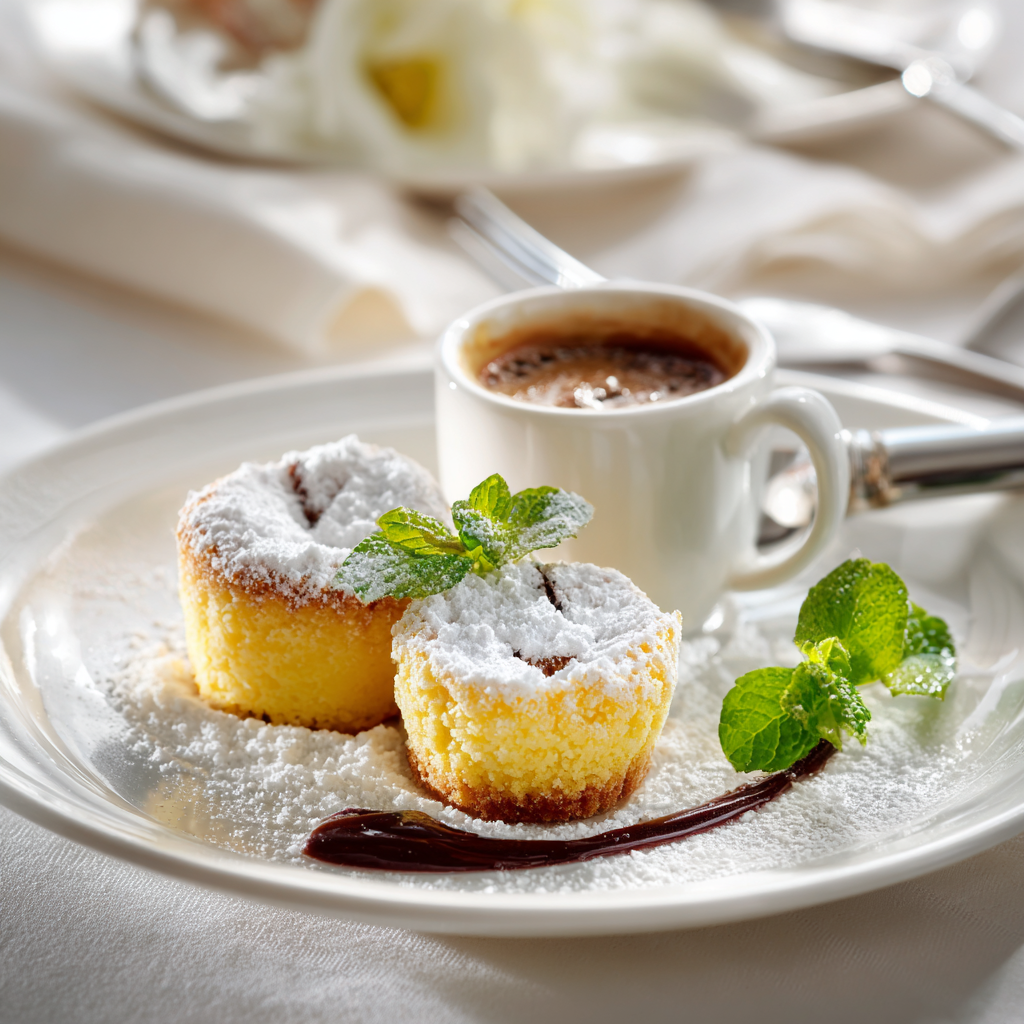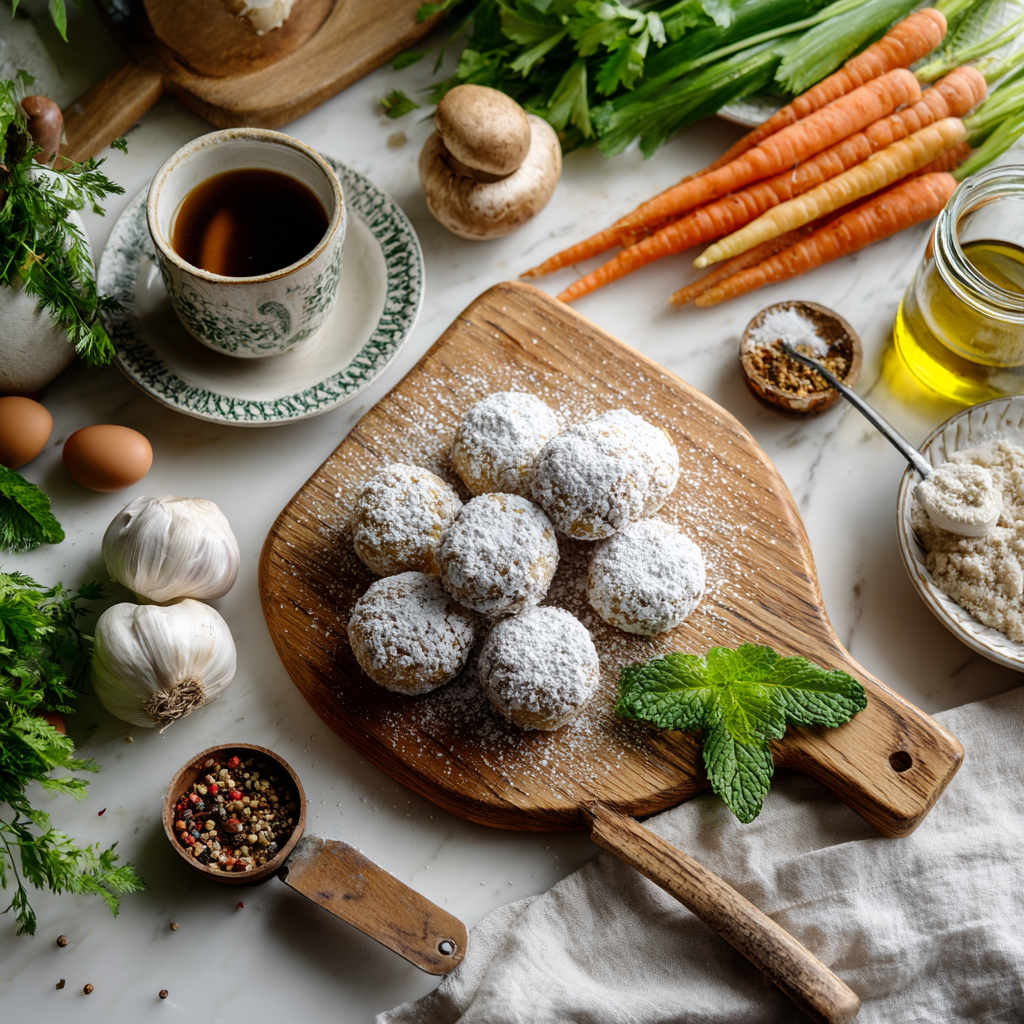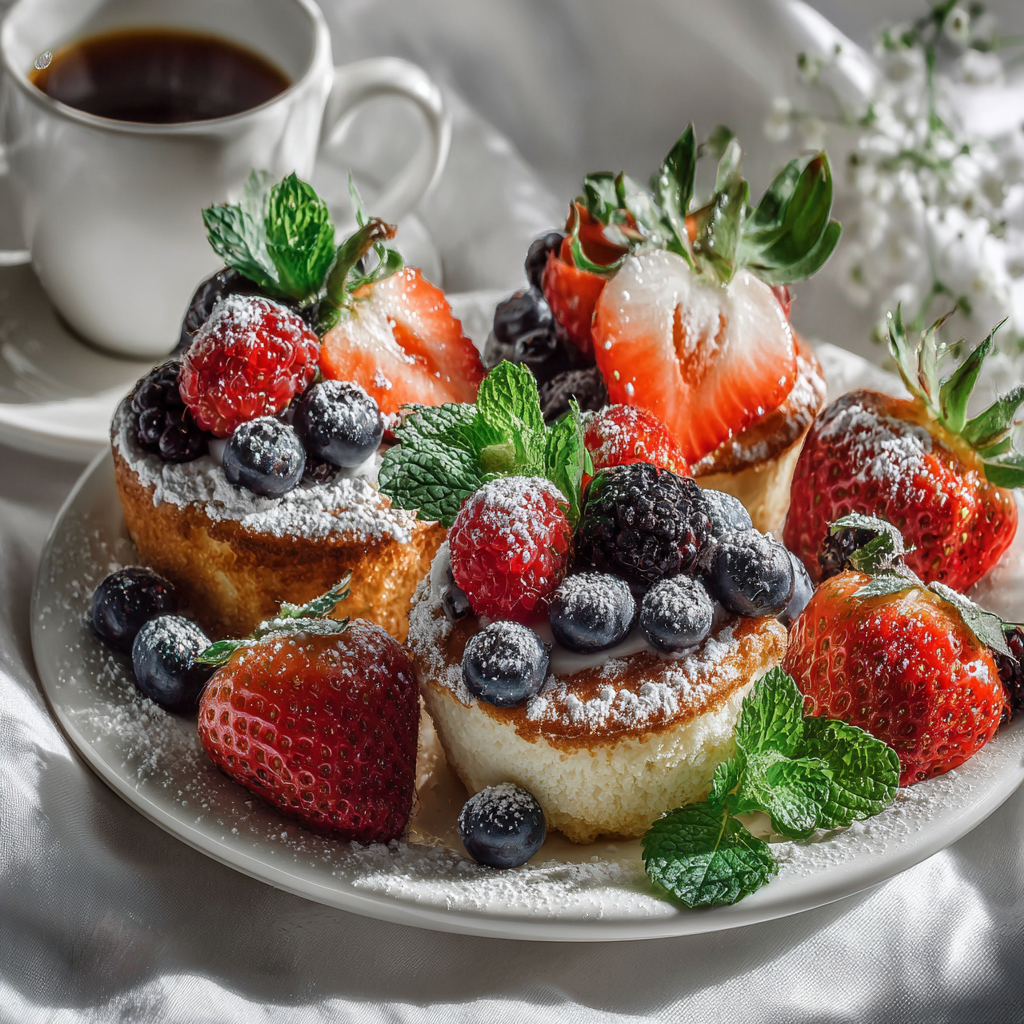Why Mini Cakes Are My Favorite Treat for Any Occasion
I still remember the first time I tasted a mini cake. It was at a friend’s birthday party, and these tiny treats were lined up perfectly on a tray. One bite, and I was hooked. They were just the right size—no need to commit to a giant slice, but still packed with flavor. Since then, mini cakes have become my go-to dessert for almost every occasion. Whether it’s a cozy afternoon tea or a big celebration, they never disappoint.
What makes mini cakes so special is their versatility. You can enjoy them alone as a sweet treat or share them with friends and family. They’re small enough to feel indulgent without being overwhelming. Plus, they’re fun to make and even more fun to eat. In this guide, I’ll walk you through everything you need to know about mini cakes. From baking your own at home to buying ready-made options like Tesco mini cakes, we’ll cover it all. And yes, there will be plenty of recipes to try!
What Are Mini Cakes? Understanding the Basics
So, what exactly are mini cakes? Simply put, they’re smaller versions of regular cakes. These bite-sized or palm-sized desserts are designed to be enjoyed in one or two servings. Their compact size makes them perfect for parties, gifts, or even a personal treat. People often ask, “What are those mini cakes called?” or “What are the names for tiny cakes?” The truth is, they go by many names depending on their style and origin.
Mini cakes stand out because they’re not just scaled-down versions of larger cakes. They often have unique shapes, flavors, and decorations that make them extra special. For example, a bento cake is a type of mini cake that’s popular in Japan. It’s usually decorated with intricate designs and served in a box, making it as much a work of art as it is a dessert. So, what is the difference between a bento cake and a mini cake? While all bento cakes are mini cakes, not all mini cakes are bento cakes. Bento cakes focus on presentation and portability, while mini cakes come in many forms.
Types of Mini Cakes
There’s no shortage of variety when it comes to mini cakes. Here are some popular types you might recognize:
- Cupcakes: These are perhaps the most well-known mini cakes. They’re easy to make and decorate, which makes them a favorite for birthdays and weddings.
- Tartlets: These mini cakes have a flaky crust and are often filled with fruit, cream, or custard.
- Bento cakes: As mentioned earlier, these are mini cakes with artistic designs, often served in a box.
- Petit fours: These are small, square cakes coated in fondant or icing. They’re a classic choice for fancy gatherings.
Store-bought options like Tesco mini cakes are also worth mentioning. They’re convenient for those who don’t have time to bake but still want to enjoy a quality dessert. However, nothing beats the satisfaction of making your own mini cakes at home.
Why Make Mini Cakes at Home?
There’s something magical about baking mini cakes in your own kitchen. Maybe it’s the smell of vanilla wafting through the air or the joy of seeing your creations come to life. Whatever it is, making mini cakes at home is an experience everyone should try. If you’ve ever wondered how to make mini cakes or searched for a mini cakes recipe, you’re in the right place.
Here’s why homemade mini cakes are better than store-bought ones:
- Freshness: Homemade cakes are always fresher. You control the ingredients, so you know exactly what goes into each bite.
- Customization: Want to add a splash of lemon zest or swap out chocolate for vanilla? When you bake at home, the possibilities are endless.
- Cost-effective: Store-bought mini cakes, like Tesco mini cakes, can be pricey. Making them yourself saves money in the long run.
- Fun factor: Baking is a great way to bond with family or unwind after a long day. Plus, kids love helping out!
Even if you don’t have fancy equipment, you can still make amazing mini cakes. For example, you don’t need a special pan to bake small cakes at home. Muffin tins or even silicone molds work just fine. With a little creativity, you can whip up a batch of mini cakes for afternoon tea or a special occasion like a wedding.
How to Get Started with Mini Cakes
If you’re new to making mini cakes, don’t worry. It’s easier than you think. Here’s a quick overview of what you’ll need:
- Basic ingredients: Flour, sugar, eggs, butter, and flavorings like vanilla or cocoa powder.
- Pan or mold: Muffin tins, mini loaf pans, or silicone molds work perfectly.
- Decorating tools: Piping bags, frosting tips, and sprinkles can take your cakes to the next level.
Once you have your supplies, the process is straightforward. Mix your batter, pour it into the molds, and bake according to your recipe. After they cool, get creative with decorations. You can find plenty of ideas online by searching for mini cakes recipe or how to make mini cakes for weddings.
Before you know it, you’ll have a tray full of delicious treats ready to impress. Whether you’re baking for yourself or sharing with others, mini cakes are sure to bring smiles all around.
How to Make Mini Cakes at Home
Alright, so you’ve got the basics down, and now you’re ready to roll up your sleeves and get baking. Trust me, once you start making mini cakes at home, you’ll wonder why you didn’t try it sooner. They’re not just fun to make—they’re also a great way to experiment with flavors and designs. Whether you’re whipping up a batch for an afternoon tea or prepping for a big event like a wedding, I’ve got you covered.
Essential Tools and Ingredients
First things first—what do you need to make these little masterpieces? Don’t worry; you don’t have to raid a specialty store. Most of what you need is probably already in your kitchen. Here’s a quick rundown:
Ingredients: Flour, sugar, eggs, butter, baking powder, and flavorings like vanilla extract are your essentials. If you’re feeling adventurous, toss in some cocoa powder for chocolate lovers or citrus zest for a tangy twist. Funny enough, one time I forgot the baking powder, and my cakes turned out flatter than pancakes. Lesson learned: double-check your pantry!
Pans or molds: You can use muffin tins, mini loaf pans, or even silicone molds. These work wonders for shaping your cakes. But here’s the thing—if you don’t have any of those, you can still make mini cakes without a pan. Just grab a clean mason jar lid, grease it lightly, and pour your batter inside. It’s a quirky trick that works surprisingly well. Or, you can bake one large cake and cut it into small squares afterward. Boom—mini cakes!
Oh, and don’t forget decorating tools. A piping bag and some sprinkles go a long way. If you’re aiming for something more intricate, check out this cotton candy cake recipe for inspiration on how to add flair to your creations.
A Simple Mini Cakes Recipe Anyone Can Follow
Let’s dive into the nitty-gritty with a straightforward recipe. This one’s foolproof—even if you’re new to baking. Here’s how to make small cakes at home:
- Mix the dry ingredients: In a bowl, combine 1 cup of all-purpose flour, 1 teaspoon of baking powder, and a pinch of salt. Give it a quick whisk to ensure everything’s evenly distributed.
- Cream the wet ingredients: In another bowl, beat 1/2 cup of softened butter and 3/4 cup of sugar until light and fluffy. Add 2 eggs, one at a time, followed by 1 teaspoon of vanilla extract. Pro tip: Room-temperature eggs blend better, so take them out of the fridge ahead of time.
- Combine everything: Gradually mix the dry ingredients into the wet mixture, alternating with 1/2 cup of milk. Stir gently to avoid overmixing, which can make your cakes dense.
- Bake: Pour the batter into your chosen molds, filling each about 2/3 full. Pop them into a preheated oven at 350°F (175°C) for 15–20 minutes. To test if they’re done, insert a toothpick—if it comes out clean, you’re golden.
- Decorate: Once cooled, frost your cakes however you like. Try experimenting with colors or patterns. For a vintage vibe, consider this vintage cake design.
By the way, if you mess up the frosting (and trust me, we all do sometimes), just scrape it off and start again. No harm, no foul.
Mini Cakes for Special Occasions
Now, let’s talk about taking these mini cakes to the next level. They’re perfect for special events because they’re bite-sized, customizable, and downright adorable. Imagine serving themed mini cakes at a wedding or birthday party. Your guests won’t know whether to eat them or admire them first!
For weddings, think elegant and refined. Picture soft pastel hues and delicate floral decorations. If you want to wow everyone, check out this Lambeth cake technique. It’s a bit advanced but totally worth the effort. Pair these beauties with champagne, and you’ve got yourself a classy affair.
Birthdays call for something playful. How about basketball-themed mini cakes? Yep, they exist, and they’re as fun as they sound. Follow this basketball cake guide to create edible hoops and balls. Kids will love them, and adults might secretly geek out too.
Holidays are another fantastic opportunity. During Christmas, go for red and green frostings with festive sprinkles. For Halloween, turn your mini cakes into spooky treats with black icing and ghostly designs. The possibilities are endless.
And let’s not forget afternoon tea—a quintessential British tradition where mini cakes shine. Serve them alongside scones and finger sandwiches for a delightful spread. Their small size makes them easy to enjoy without overwhelming your guests. Plus, who can resist popping one (or three) into their mouth?
Where to Buy Mini Cakes
Okay, I get it—not everyone has the time or energy to bake from scratch. That’s where store-bought options come in handy. Sometimes, it’s nice to skip straight to the eating part. Brands like Tesco offer a range of ready-to-eat mini cakes that are convenient and tasty. While they may not have the personal touch of homemade ones, they’re still a solid choice for last-minute gatherings or when you’re craving something sweet.
If you’re wondering about mini cake prices, they vary depending on the brand and quantity. Tesco mini cakes tend to be reasonably priced, especially if you buy in bulk. You can find them in-store or online, often packaged beautifully for gifting. Just search for “mini cakes to buy,” and you’ll see plenty of options.
That said, nothing beats the satisfaction of homemade treats. So if you ever feel inspired, revisit this guide and give it a shot. After all, life’s too short not to indulge in a little baking magic every now and then.
Pricing and Budgeting for Mini Cakes
Let’s talk numbers—because, let’s face it, budgeting is part of the fun. If you’re wondering about the mini cake price, there’s a pretty big range depending on whether you’re buying them or making them yourself. I’ve been in both camps, and honestly, each has its perks.
For homemade mini cakes, the cost boils down to ingredients and effort (though I don’t count effort as a cost because baking is my happy place). A basic batch might set you back around $5–$10 if you already have staples like flour and sugar at home. Fancy add-ons like high-quality chocolate, edible flowers, or intricate decorations can bump that up to $15–$20. But here’s the thing: one batch usually makes 12–24 mini cakes, so the per-cake cost is tiny. Plus, you get bragging rights when people ask where you bought them.
On the flip side, store-bought options like Tesco mini cakes are convenient but pricier. You’re looking at anywhere from $1–$3 per cake, depending on the brand and design. If you’re hosting a big event, this can add up fast. Funny enough, I once splurged on a pack of six Tesco mini cakes for a last-minute tea party, and while they were delicious, I couldn’t help but think how much further my money would’ve gone if I’d baked them myself.
What really influences the cost? For homemade cakes, it’s all about the ingredients and complexity. Want to use organic butter or exotic flavorings? That’ll nudge the price up. As for store-bought cakes, branding plays a big role. Designer labels and intricate designs mean higher prices. So, if you’re on a tight budget, sticking to simpler designs or baking your own is the way to go.
Creative Ways to Serve Mini Cakes
Serving mini cakes isn’t just about placing them on a plate—it’s about creating an experience. Whether you’re hosting an afternoon tea or throwing a full-blown party, presentation matters. Here’s how to make your mini cakes the star of the show:
- Pair with beverages: Match your mini cakes with drinks that complement their flavors. For example, rich chocolate mini cakes go beautifully with a bold coffee or a glass of red wine. Lighter flavors like lemon or vanilla pair well with herbal teas or sparkling water. I once served lavender-infused mini cakes with chamomile tea at a brunch, and it was a hit.
- Think outside the plate: Instead of just plopping them on a tray, try tiered stands, wooden boards, or even small boxes for a bento cake vibe. I love using mismatched vintage plates for a quirky, eclectic look. It’s unexpected and adds charm.
- Add themed touches: Tailor your presentation to the occasion. For weddings, wrap each mini cake in parchment paper and tie it with ribbon. For holidays, sprinkle edible glitter or themed decorations on top. One time, I made Halloween-themed mini cakes with black icing and candy eyeballs—they were almost too cute to eat (almost).
By the way, if you’re serving mini cakes for afternoon tea, consider arranging them alongside other treats like scones, finger sandwiches, and macarons. It creates a full spread that feels indulgent yet balanced. And don’t forget the napkins! A little attention to detail goes a long way.
Frequently Asked Questions (FAQ)
Before we wrap things up, let’s tackle some common questions about mini cakes. Chances are, you’ve wondered about these at some point!
- What are those mini cakes called? Mini cakes go by many names depending on their style. Some call them petit fours, others refer to them as bento cakes if they’re boxed and decorated artistically. Essentially, they’re bite-sized desserts designed for individual servings.
- What are the names for tiny cakes? Besides “mini cakes,” you might hear terms like tartlets, cupcakes, or even mignardises (a fancy French term for small sweets). Each name often reflects the cake’s origin or design.
- What is the difference between a bento cake and a mini cake? All bento cakes are mini cakes, but not all mini cakes are bento cakes. Bento cakes focus on artistic presentation and portability, often served in a box. Regular mini cakes can be simpler and less elaborate.
- How do I make mini cakes without a pan? No problem! Use silicone molds, muffin liners, or even greased jar lids. Alternatively, bake a regular cake and cut it into small squares or shapes after cooling.
- Are mini cakes expensive to make? Not at all! Homemade mini cakes are surprisingly affordable, especially if you stick to basic ingredients. Store-bought ones tend to be pricier due to packaging and branding.
- Can I freeze mini cakes? Absolutely. Most mini cakes freeze well if stored in an airtight container. Just thaw them at room temperature before serving. They’re perfect for prepping ahead of time.
- What’s the best frosting for mini cakes? Buttercream is versatile and easy to work with, but fondant gives a polished, professional look. Experiment with different textures and colors to find what suits your style.
- How far in advance can I make mini cakes? You can bake them up to two days ahead and store them in an airtight container. Add frosting closer to serving time to keep it fresh.
- Do mini cakes need special recipes? Not necessarily. Most standard cake recipes can be adapted for mini cakes by adjusting baking times. Just keep an eye on them to avoid overbaking.
- Where can I find inspiration for decorating mini cakes? Check out online resources like cake decorating ideas. Pinterest and Instagram are also goldmines for creative designs.
Final Thoughts on Mini Cakes
There’s something magical about mini cakes—they’re bite-sized bundles of joy that bring people together. Whether you’re whipping up a batch at home or picking up a pack from the store, they’re guaranteed to spark smiles. Life’s too short not to indulge in a little sweetness now and then, right?
Here’s my challenge to you: try making mini cakes at least once. Even if you’re not a seasoned baker, the process is incredibly rewarding. And hey, if things don’t turn out perfectly, that’s okay—there’s always next time. After all, practice makes perfect (and tastier cakes).
One Last Encouragement
So, grab your apron, fire up the oven, or swing by your favorite bakery. However you choose to enjoy them, let mini cakes remind you that even the smallest treats can bring the biggest happiness. Happy baking!

Equipment
- Mixing bowls
- Whisk
- Muffin tins or mini loaf pans
- Oven
- Toothpick
- Piping bags (for decoration)
Ingredients
- 1 cup all-purpose flour
- 1 teaspoon baking powder
- pinch teaspoon salt
- 1/2 cup softened butter
- 3/4 cup sugar
- 2 eggs (room temperature)
- 1 teaspoon vanilla extract
- 1/2 cup milk
Instructions
- In a bowl, combine flour, baking powder, and salt. Whisk to combine.
- In another bowl, beat softened butter and sugar until light and fluffy.
- Add eggs one at a time, followed by vanilla extract.
- Gradually mix the dry ingredients into the wet mixture, alternating with milk. Stir gently.
- Pour the batter into molds, filling each about 2/3 full.
- Bake in a preheated oven at 350°F (175°C) for 15–20 minutes.
- Test doneness with a toothpick; if it comes out clean, cakes are done.
- Once cooled, decorate the cakes as desired.


